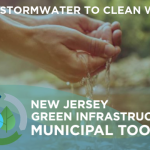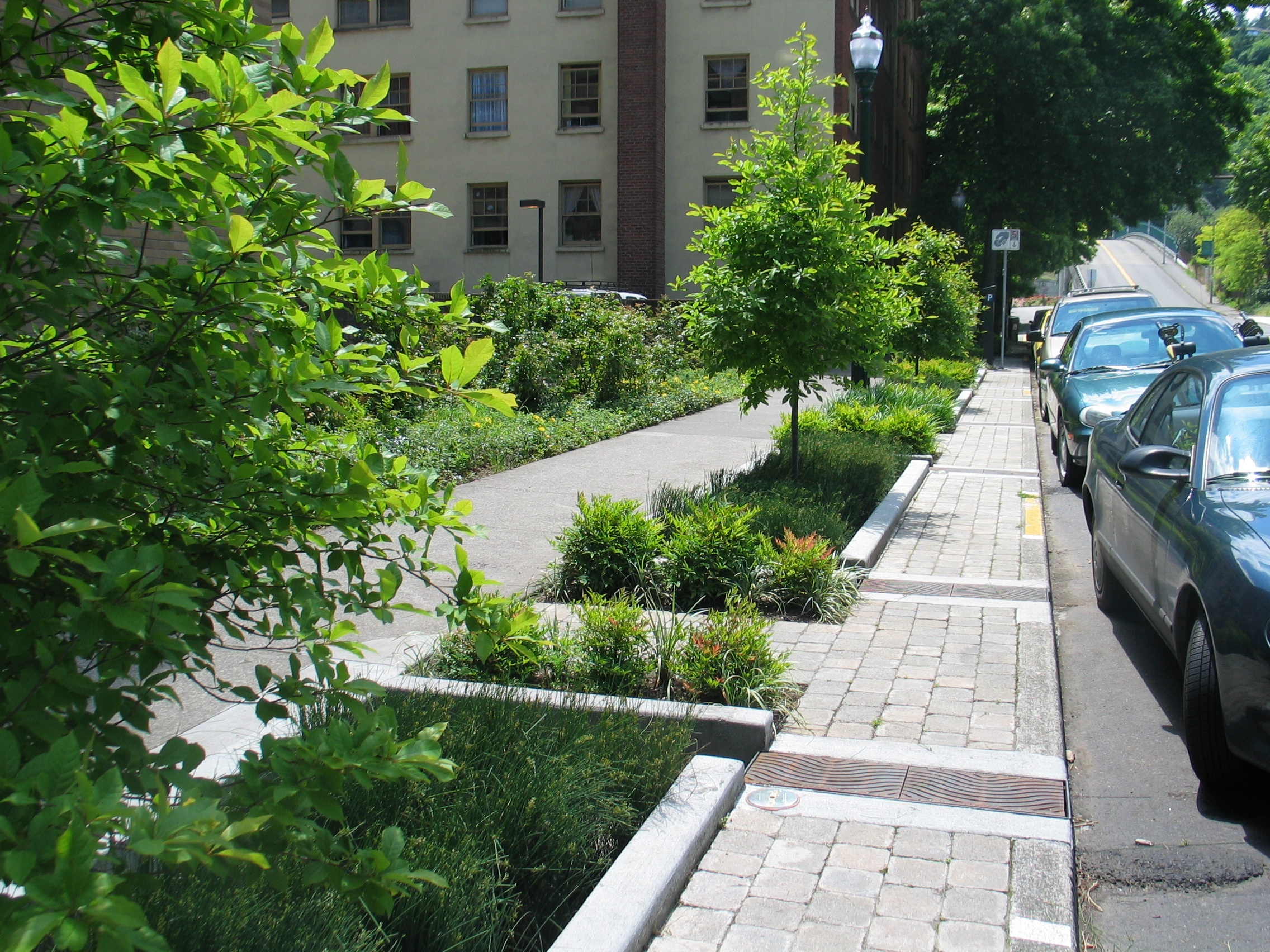New Jersey Future Blog
Green infrastructure resource wins national award
September 3rd, 2019 by New Jersey Future staff
New Jersey Future’s Green Infrastructure Municipal Toolkit has been honored with an Excellence in Communications Award from the National Association of Flood and Stormwater Management Agencies (NAFSMA). This award celebrates outstanding communications projects that inform the public about flood awareness, pollution prevention, and environmental protection.
The Toolkit, which debuted in November 2018, is a one-stop resource for communities that are interested in managing stormwater runoff in a more effective and sustainable way by using green infrastructure. Rather than routing rain into traditional “gray” pipes, most green infrastructure allows rainfall and snowmelt to soak into the ground, filtering out pollutants, recharging groundwater supplies, and protecting against floods. Some green infrastructure practices such as cisterns and wet ponds capture rainwater for irrigation or other beneficial uses. Green infrastructure has become increasingly prominent as a stormwater management tool. The New Jersey Department of Environmental Protection soon will require the use of green infrastructure in new development to meet the state’s standards for water quality, groundwater recharge, and volume control.
“Local leaders are keenly interested in clean water, clean air, attractive streetscapes, and in general doing all they can to create and sustain a high quality of life in their communities,” said Louise Wilson, New Jersey Future’s director of green infrastructure. “Green infrastructure contributes to all of those goals, and in this era of climate change, it’s one of the most effective ways to make downtowns and neighborhoods a bit cooler, less flood-prone, and more appealing places to live, work, and spend leisure time.”
“With the rule change that’s coming later this year, green stormwater infrastructure won’t be just a good way for towns to ‘go green’ and supplement traditional gray infrastructure,” Wilson noted. “Green infrastructure becomes the required first choice. The Toolkit helps municipalities know how to do what they will have to do. We’re proud of it. And we’re delighted to have worked with such a talented team of municipal advisors and consultants to pull it all together.”
“The Toolkit was developed because New Jersey Future’s initial green infrastructure grant specified that we work with towns in designated geographic areas,” said Kandyce Perry, planning and policy manager at New Jersey Future. “In the course of that work, we amassed a wide array of green infrastructure resources and best practices and wanted to share those resources statewide. Developing the Toolkit made those resources available to everyone, at no cost.”
The Toolkit offers practical advice and resources for local elected officials, planning and zoning board members, environmental commissions, and anyone else involved in the design and implementation of municipal projects. It provides information on how to plan, implement, and sustain green infrastructure. It also includes videos highlighting success stories and case studies. For municipalities involved in the Sustainable Jersey program, it links to green infrastructure actions that are eligible for certification points.
“I have found the planning and ordinance text examples in the plan section of the website to be particularly helpful and have incorporated some of this language in redevelopment plans for several municipalities,” reflected Kendra Lelie, senior associate at Clarke Caton Hintz, the lead consultant who developed the Toolkit. “I also appreciate the guidance about site-specific assessment, which is useful for both professionals and volunteers. These and other Toolkit resources show you how to think differently about stormwater management.”

Kandyce Perry and Louise Wilson
New Jersey Future’s Mainstreaming Green Infrastructure program staff, Louise Wilson and Kandyce Perry, developed the Toolkit in consultation with the Green Infrastructure Municipal Toolkit Advisory Committee, a group of more than 20 municipal leaders and experts. The Toolkit was assembled and designed by a professional team of consultants, including Clarke Caton Hintz; Rutgers Cooperative Extension Water Resources Program; Princeton Hydro; BRS, Inc.; and FZ Creative.
While the Toolkit was developed with New Jersey in mind, most of it can be used by any community in any state. It creates a replicable model for helping municipalities establish green infrastructure nationwide.

















